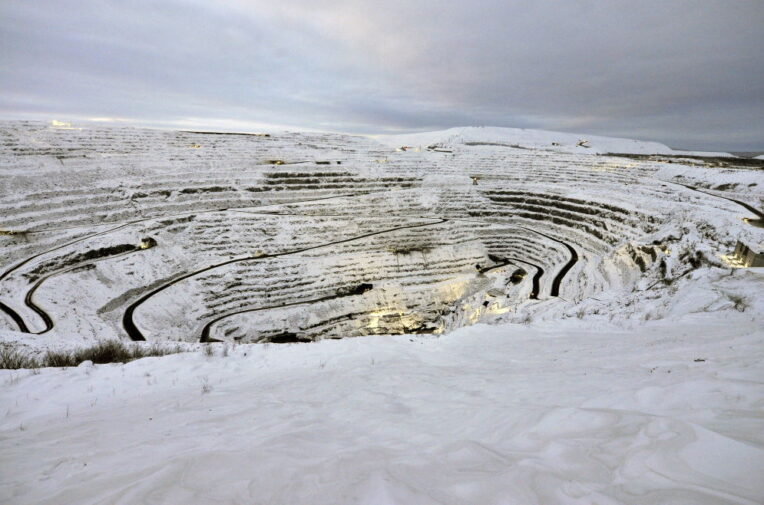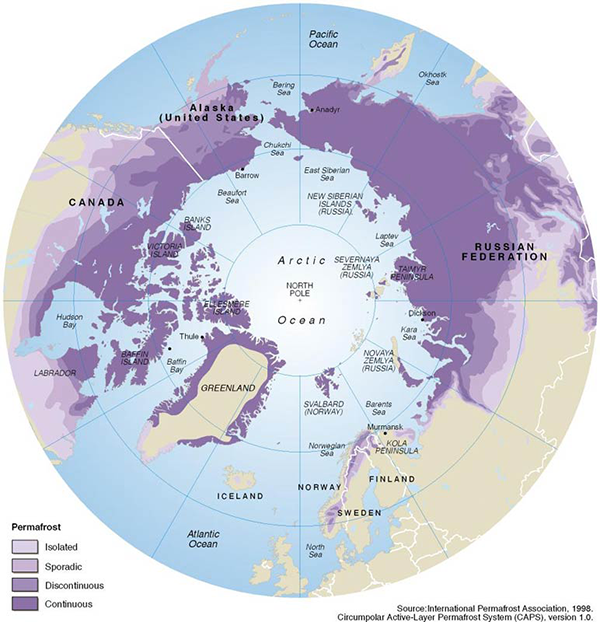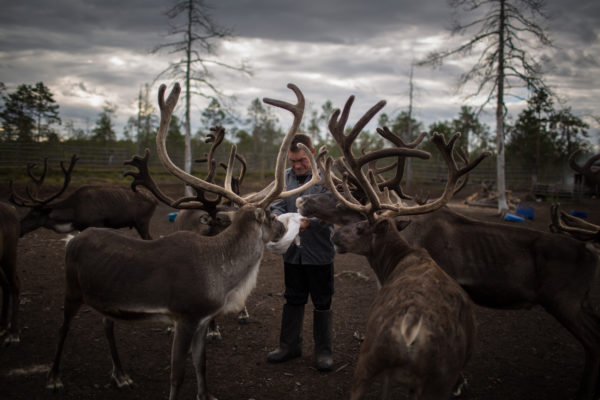Glenn Greenwald heeft een artikel geschreven waarin hij eerst aandacht besteedt aan de antrax aanvallen in de VS na de aanslagen van 9/11 (2001). Hij beschrijft hoe de FBI en anderen zochten naar de dader, waarbij men eerst de schuld in de schoenen van Saddam Hoessein probeerde te schuiven. Toen bleek dat de gevonden antrax, uit het VS militair laboratorium van Fort Detrick kwam, begon men een paar wetenschappers te beschuldigen, waarvan er één werkzaam was in dat laboratorium, met die beschuldiging werd de reputatie van deze mensen ernstig beschadigd, zoals die van dr. Steven Hatfill, een voormalig wetenschapper van de overheid, aan wie de VS overheid later 6 miljoen euro schadevergoeding moest betalen vanwege die valse beschuldiging......
Daarna werd microbioloog Bruce Ivins beschuldigd, deze wetenschapper was werkzaam in Fort Detrick, echter voor men hem kon aanklagen zou deze wetenschapper zich het leven hebben benomen...... Wat mij betreft discutabel, daar dit de FBI wel erg goed uitkwam: immers waarom zou Ivins zich het leven benemen als hij onschuldig was? Anders gezegd de kans is groot dat Ivins werd vermoord , waarbij men het op een suïcide liet lijken, dit om hem blijvend als schuldige aan te kunnen wijzen >> dergelijke 'suïcides' zijn een specialiteit van zowel de FBI als de CIA....... Overigens is het overgrote deel van de betrokkenen ervan overtuigd dat Ivins niets met de verspreiding van antrax te maken had: het zou zelfs onmogelijk zijn dat hij dit alleen zou hebben kunnen doen........
 De militaire laboratoria van Fort Detrick
De militaire laboratoria van Fort Detrick
Greenwald vindt e.e.a. belangrijk gezien de vraag waar het Coronavirus vandaan kwam, onlangs door Joe Biden nog eens aangewezen als belangrijk onderzoeksproject. Uit onderzoek naar de antrax uit 2001 bleek dat deze was aangepast in het militaire laboratorium in Fort Detrick, zogenaamd om uit te zoeken of er een vaccin tegen deze vorm van antrax was te fabriceren...... Geheel terecht merkt Greenwald op dat de VS weliswaar verdragen tegen het fabriceren van biologische wapens heeft getekend, maar in feite nog steeds bezig is met het fabriceren van dodelijke virussen en bacteriestammen in het bewuste militaire laboratorium.......
Jammer dat Greenwald niet het met spoed sluiten noemt van Fort Detrick in de zomer van 2019, dit daar er een gevaarlijk virus was ontsnapt....... Het zou overigens zeker zijn dat ook het Coronavirus in dat laboratorium onderwerp van onderzoek was, niet zo vreemd als je bedenkt dat dit virus al lang rondwaart, echter zonder de ernstige gevolgen zoals we die het laatste jaar hebben gezien >> alleen dat laatste is al verdacht en zou kunnen aangeven dat er inderdaad is 'gedokterd' aan dit virus (hoewel het Coronavirus nog steeds géén dodelijk virus mag worden genoemd zoals bijvoorbeeld Ebola....)..... Eén theorie is dat het militaire laboratorium van Fort Detrick samenwerkte met een laboratorium in Wuhan, de stad die onterecht werd aangewezen als plek waar het virus voor het eerst zou zijn gevonden, immers uit nader onderzoek vorig voorjaar van stalen bloed, afgenomen in november 2019 in Frankrijk, blijkt dat twee mensen in die maand al waren besmet met het Coronavirus dat intussen zoveel ellende heeft veroorzaakt.... Nader onderzoek heeft overigens uitgewezen dat al voor de ontdekking van de eerste Coronabesmettingen in China er in de VS al mensen waren besmet met het virus*.
Vergeet bij dit alles niet dat gezonde mensen amper last hebben van het virus en militairen zijn over het algemeen in goede conditie, dus de kans dat die ernstig ziek worden van het virus is zeer klein..... Tel daarbij op dat in oktober 2019 de militaire wereldspelen plaatsvonden in Wuhan, waar ook militairen uit de VS aan deel hebben genomen, ofwel het is heel goed mogelijk dat één of meer militairen dit virus onbedoeld hebben overgebracht naar Wuhan.......
besmettelijk
Het is zonder meer een schande dat er ondanks de Coronacrisis nog steeds biologische wapens worden gemaakt, die duidelijk worden gefabriceerd om als wapen in te zetten.... Vorig jaar werd Fort Detrick weer geopend en ging men daar ondanks de 'pandemie' door met onderzoek naar biologische wapens als virussen om die in te zetten tegen een toekomstig vijandig land....... (en de bevolking van zo'n land.....)
Lees het schrijven van Greenwald en vorm je eigen mening over deze zaak....
The FBI's Strange Anthrax Investigation Sheds Light on COVID Lab-Leak Theory and Fauci's Emails
Mainstream institutions doubted the FBI had solved the 2001 anthrax case. Either way, revelations that emerged about U.S. Government bio-labs have newfound relevance.

One of the most significant events of the last two decades has been largely memory-holed: the October, 2001 anthrax attacks in the U.S. Beginning just one week after 9/11 and extending for another three weeks, a highly weaponized and sophisticated strain of anthrax had been sent around the country through the U.S. Postal Service addressed to some of the country's most prominent political and media figures. As Americans were still reeling from the devastation of 9/11, the anthrax killed five Americans and sickened another seventeen.
As part of the extensive reporting I did on the subsequent FBI investigation to find the perpetrator(s), I documented how significant these attacks were in the public consciousness. ABC News, led by investigative reporter Brian Ross, spent a full week claiming that unnamed government sources told them that government tests demonstrated a high likelihood that the anthrax came from Saddam Hussein's biological weapons program. The Washington Post, in November, 2001, also raised “the possibility that [this weaponized strain of anthrax] may have slipped through an informal network of scientists to Iraq.” Sen. John McCain (R-AZ) appeared on The David Letterman Show on October 18, 2001, and said: “There is some indication, and I don't have the conclusions, but some of this anthrax may -- and I emphasize may -- have come from Iraq.” Three days later, McCain appeared on Meet the Press with Sen. Joe Lieberman (D-CT) and said of the anthrax perpetrators: “perhaps this is an international organization and not one within the United States of America,” while Lieberman said the anthrax was so finely weaponized that “there's either a significant amount of money behind this, or this is state-sponsored, or this is stuff that was stolen from the former Soviet program” (Lieberman added: “Dr. Fauci can tell you more detail on that”).
In many ways, the prospect of a lethal, engineered biological agent randomly showing up in one's mailbox or contaminating local communities was more terrifying than the extraordinary 9/11 attack itself. All sorts of oddities shrouded the anthrax mailings, including this bizarre admission in 2008 by long-time Washington Post columnist Richard Cohen: “I had been told soon after Sept. 11 to secure Cipro, the antidote to anthrax. The tip had come in a roundabout way from a high government official. I was carrying Cipro way before most people had ever heard of it.” At the very least, those anthrax attacks played a vital role in heightening fear levels and a foundational sense of uncertainty that shaped U.S. discourse and politics for years to come. It meant that not just Americans living near key power centers such as Manhattan and Washington were endangered, but all Americans everywhere were: even from their own mailboxes.
 Letter sent to NBC News anchor Tom Brokaw, along with weaponized anthrax, in September, 2001 Letter sent to NBC News anchor Tom Brokaw, along with weaponized anthrax, in September, 2001 |
The FBI first falsely cast suspicion on a former government scientist, Dr. Steven Hatfill, who had conducted research on mailing deadly anthrax strains. Following the FBI’s accusations, media outlets began dutifully implying that Hatfill was the culprit. A January, 2002, New York Times column by Nicholas Kristof began by declaring: “I think I know who sent out the anthrax last fall,” then, without naming him, proceeded to perfectly describe Hatfill in a way that made him easily identifiable to everyone in that research community. Hatfill sued the U.S. Government, which eventually ended up paying him close to $6 million in damages before officially and explicitly exonerating him and apologizing. His lawsuit against the NYT and Kristof were dismissed since he was never named by the paper, but the columnist also apologized to him six years later.
A full eight years after the attack, the FBI once again claimed that it had found the perpetrator: this time, it was the microbiologist Bruce Ivins, a long-time “biodefense” researcher at the U.S. Army’s infectious disease research lab in Fort Detrick, Maryland. Yet before he could be indicted, Ivins died, apparently by suicide, to avoid prosecution. As a result, the FBI was never required to prove its case in court. The agency insisted, however, that there was no doubt that Ivins was the anthrax killer, citing genetic analysis of the anthrax strain that they said conclusively matched the anthrax found in Ivins’ U.S. Army lab, along with circumstantial evidence pointing to him.
But virtually every mainstream institution other than the FBI harbored doubts. The New York Times quoted Ivins’ co-workers as calling into question the FBI’s claims (“The investigators looked around, they decided they had to find somebody”), and the paper also cited “vocal skepticism from key members of Congress.” Sen. Patrick Leahy (D-VT), one of the targets of the anthrax letters, said explicitly he did not believe Ivins could have carried out the attacks alone. Sen. Charles Grassley (R-IA) and then-Rep. Rush Holt (D-NJ), a physicist, said the same to me in interviews. The nation’s three largest newspapers — The New York Times, The Washington Post, and The Wall Street Journal — all editorially called for independent investigations on the grounds that the FBI’s evidence was inconclusive if not outright unconvincing. One of the country’s most prestigious science journals, Nature, published an editorial under the headline “Case Not Closed,” arguing, about the FBI’s key claims, that “the jury is still out on those questions.”
When an independent investigation was finally conducted in 2011 into the FBI’s scientific claims against Ivins, much of that doubt converted into full-blown skepticism. As The New York Times put it — in a 2008 article headlined "Expert Panel Is Critical of F.B.I. Work in Investigating Anthrax Letters" — the review “concludes that the bureau overstated the strength of genetic analysis linking the mailed anthrax to a supply kept by Bruce E. Ivins.” A Washington Post article -- headlined: "Anthrax report casts doubt on scientific evidence in FBI case against Bruce Ivins" -- announced that "the report reignited a debate that has simmered among some scientists and others who have questioned the strength of the FBI's evidence against Ivins."
An in-depth joint investigation by ProPublica, PBS and McClatchy — published under the headline “New Evidence Adds Doubt to FBI’s Case Against Anthrax Suspect” — concluded that “newly available documents and the accounts of Ivins’ former colleagues shed fresh light on the evidence and, while they don't exonerate Ivins, are at odds with some of the science and circumstantial evidence that the government said would have convicted him of capital crimes.” It added: “even some of the government’s science consultants wonder whether the real killer is still at large.” The report itself, issued by the National Research Council, concluded that while the components of the anthrax in Ivins’ lab were “consistent” with the weaponized anthrax that had been sent, “the scientific link between the letter material and flask number RMR-1029 [found in Ivins’ lab] is not as conclusive as stated in the DOJ Investigative Summary."
In short, these were serious and widespread mainstream doubts about the FBI’s case against Ivins, and those have never been resolved. U.S. institutions seemingly agreed to simply move on without ever addressing lingering scientific and other evidentiary questions regarding whether Ivins was really involved in the anthrax attacks and, if so, how it was possible that he could have carried out this sophisticated attack within a top-secret U.S. Army lab acting alone. So whitewashed is this history that doubts about whether the FBI found the real perpetrator are now mocked by smug Smart People as a fringe conspiracy theory rather than what they had been: the consensus of mainstream institutions.
But what we do know for certain from this anthrax investigation is quite serious. And because it is quite relevant to the current debates over the origins of COVID-19, it is well-worth reviewing. A trove of emails from Dr. Anthony Fauci — who was the government’s top infectious disease specialist during the AIDS pandemic, the anthrax attacks, and the COVID pandemic — was published on Monday by BuzzFeed after they were produced pursuant to a FOIA request. Among other things, they reveal that in February and March of last year — at the time that Fauci and others were dismissing any real possibility that the coronavirus inadvertently escaped from a lab, to the point that the Silicon Valley monopolies Facebook and Google banned any discussion of that theory -- Fauci and his associates and colleagues were privately discussing the possibility that the virus had escaped from the Wuhan Institute of Virology, possibly as part of a U.S.-funded joint program with the scientists at that lab.
Last week, BBC reported that “in recent weeks the controversial claim that the pandemic might have leaked from a Chinese laboratory — once dismissed by many as a fringe conspiracy theory — has been gaining traction.” President Biden ordered an investigation into this lab-leak possibility. And with Democrats now open to this possibility, “Facebook reversed course Thursday and said that it would no longer remove posts that claim the virus is man-made,” reported The Washington Post. Nobody can rationally claim to know the origins of COVID, and that is exactly why — as I explained in an interview on the Rising program this morning — it should be so disturbing that Silicon Valley monopolies and the WHO/Fauci-led scientific community spent a full year pretending to have certainty about that “debunked” theory that they plainly did not possess, to the point where discussions of it were prohibited on social media.
What we know — but have largely forgotten — from the anthrax case is now vital to recall. What made the anthrax attacks of 2001 particularly frightening was how sophisticated and deadly the strain was. It was not naturally occurring anthrax. Scientists quickly identified it as the notorious Ames strain, which researchers at the U.S. Army lab in Fort Detrick had essentially invented. As PBS’ Frontline program put it in 2011: “in October 2001, Northern Arizona University microbiologist Dr. Paul Keim identified that the anthrax used in the attack letters was the Ames strain, a development he described as ‘chilling’ because that particular strain was developed in U.S. government laboratories.” As Dr. Keim recalled in that Frontline interview about his 2001 analysis of the anthrax strain:
We were surprised it was the Ames strain. And it was chilling at the same time, because the Ames strain is a laboratory strain that had been developed by the U.S. Army as a vaccine-challenge strain. We knew that it was highly virulent. In fact, that’s why the Army used it, because it represented a more potent challenge to vaccines that were being developed by the U.S. Army. It wasn’t just some random type of anthrax that you find in nature; it was a laboratory strain, and that was very significant to us, because that was the first hint that this might really be a bioterrorism event.
Why was the U.S. government creating exotic and extraordinarily deadly infectious bacterial strains and viruses that, even in small quantities, could kill large numbers of people? The official position of the U.S. Government is that it does not engage in offensive bioweapons research: meaning research designed to create weaponized viruses as weapons of war. The U.S. has signed treaties barring such research. But in the wake of the anthrax attacks — especially once the FBI’s own theory was that the anthrax was sent by a U.S. Army scientist from his stash at Fort Detrick — U.S. officials were forced to acknowledge that they do engage in defensive bioweapons research: meaning research designed to allow the development of vaccines and other defenses in the event that another country unleashes a biological attack.
But ultimately, that distinction barely matters. For both offensive and defensive bioweapons research, scientists must create, cultivate, manipulate and store non-natural viruses in their labs, whether to study them for weaponization or for vaccines. A fascinating-in-retrospect New Yorker article from March, 2002, featured the suspicions of molecular biologist Barbara Hatch Rosenberg, who had “strongly implied that the F.B.I. was moving much more slowly in its anthrax investigation than it had any reason to.” Like The New York Times, the magazine (without naming him) detailed her speculation that Dr. Hatfill was the perpetrator (though her theory about his motive — that he wanted to scare people about anthrax in order to increase funding for research — was virtually identical to the FBI’s ultimate accusations about Dr. Ivins’ motives).
But the key point that is particularly relevant now is what all of this said about the kind of very dangerous research the U.S. Government, along with other large governments, conducts in bioweapons research labs. Namely, they manufacture and store extremely lethal biological agents that, if they escape from the lab either deliberately or inadvertently, can jeopardize the human species. As the article put it:
The United States officially forswore biological-weapons development in 1969, and signed the 1972 Biological Weapons Convention, along with many other nations. But Rosenberg believes that the American bioweapons program, which won't allow itself to be monitored, may not be in strict compliance with the convention. If the perpetrator of the anthrax attacks is who she thinks it is, that would put the American program in a bad light, and it would prove that she was right to demand that the program be monitored.
If the government is saying that the perpetrator was probably an American, it's hard to imagine how it couldn't have been an American who worked in a government-supported bioweapons lab. Think back to the panicky month of October [2001]: would knowing that have made you less nervous, or more?
Having extensively reported on the FBI’s investigation into the anthrax case and ultimate claim to have solved it, I continue to share all the doubts that were so widely expressed at the time about whether any of that was true. But what we know for certain is that the U.S. government and other governments do conduct research which requires the manufacture of deadly viruses. Dr. Fauci has acknowledged that the U.S. government indirectly funded research by the Wuhan Institute of Virology into coronaviruses, though he denies that this was for so-called “gain of function” research, whereby naturally occurring viruses are manipulated to make them more transmissible and/or more harmful to humans.
We do not know for sure if the COVID-19 virus escaped from the Wuhan lab, another lab, or jumped from animals to humans. But what we do know for certain — from the anthrax investigation — is that governments most definitely conduct the sort of research that could produce novel coronaviruses. Dr. Rosenberg, the subject of the 2002 New Yorker article, was suggesting that the F.B.I. was purposely impeding its own investigation because they knew that the anthrax actually came from the U.S. government’s own lab and wanted to prevent exposure of the real bio-research that is done there. We should again ponder why the pervasive mainstream doubts about the F.B.I.’s case against Ivins have been memory-holed. We should also reflect on what we learned about government research into highly lethal viruses from that still-strange episode.
To support the independent journalism we are doing here, please subscribe and/or purchase a gift subscription for others:
========================================
* Zie : 'Study Suggests Covid-19 Was In The U.S. Weeks Earlier Than Thought, Before First Public Cases In China' (dit artikel van 1 december 2020 stelt wel dat het virus al weken eerder in de VS werd gevonden, vóór de eerste melding in China, eind december 2020....)
Zie ook: 'VS universiteiten stellen na onderzoek dat het Coronavirus al 2 maanden vóór december 2019 rondging'
'Coronavirus: China door het slijk halen'
'Coronavirus: alles wijst erop dat dit virus uit een militair laboratorium van de VS komt'
'Coronavirus hysterie: de nieuwe anti-Chinese campagne in de VS bestaat (alweer) uit leugens'
'Coronavirus: hysterische en belachelijke beschuldigingen aan adres China'
'Coronavirus: militaire laboratoria werken aan biologische wapens als virussen >> waarom heeft niemand daar commentaar op?' (en zie de links in dat bericht!!)
'VS loopt achter de 'Coronafeiten' aan en geeft nu zelfs Rusland de schuld van het manipuleren van de verkiezingen door haar humanitaire hulp' (humanitaire hulp aan de VS wel te verstaan, een beschuldiging van uiterst onbeschofte proporties., maar ja het gaat dan ook om de VS, de grootste terreurentiteit ter wereld......)
'Coronavirus tragedie misbruikt voor racisme en het zaaien van haat''
'Antrax 'aanvallen' na 911, de antrax kwam uit VS overheidsvoorraad, verspreid door.........'





